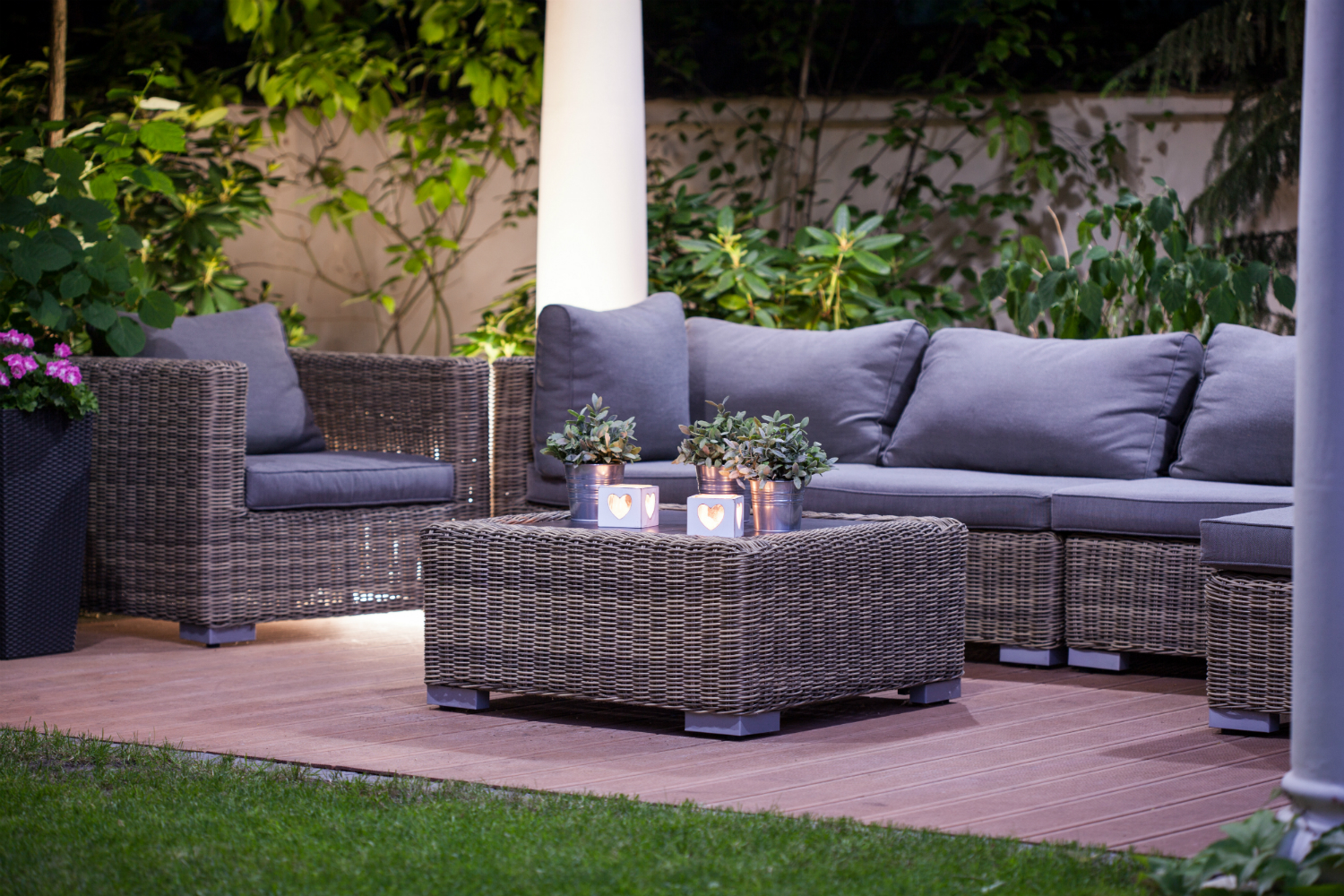Outdoor lighting is a priority for Reading, PA homeowners. Proper outdoor lighting leaves a great first impression and helps your home to stand out from others in the neighborhood. Lighting also increases curb appeal and safety. Your outdoor lighting needs to be both practical and balanced to accentuate the beauty of your landscape.
Identify the Best Landscape Features
Take a look at your landscape and try to identify the features that you like. It can be anything from a tree, walkway, or focal point, to a certain type of plant. The idea is to highlight the good features and hide the flaws. Accenting areas that tend to stand out during the day will also give the landscape a personality at night. It is important to keep safety and function in mind through the process of planning your outdoor lighting.
Uplighting
Uplighting is a basic form of landscape lighting that is used to create a dramatic effect for tall structures, like retaining walls and trees. Uplighting is great for highlighting your landscape’s best features and can be used to light up the underside of tree limbs or canopy. To achieve this effect, have the fixture installed near the element, shining upwards. To avoid glare, make sure not to position the lights in such a way that they shine directly into windows or onto reflective surfaces.
Walkway Lighting
Walkway lighting creates an inviting environment and provides safety and ease of navigation. The most common mistake with this type of lighting is in creating an over-lit, crowded space by using too many lights. To avoid that, have the fixtures placed in a staggered formation on alternative sides of the path.
Cross Lighting
Cross light your home’s landscaping features for a subtle look. The point of cross lighting is to highlight an object using two or more lights.
Silhouetting
Silhouetting is a lighting effect that creates dramatic shapes in your landscape. To achieve this effect, a light source is placed behind the plant or landscape element that you wish to silhouette. The light is also placed to face towards the main vantage point. Silhouetting is most effective when the source of lighting is hidden.
Shadowing
Shadowing is the reverse of silhouetting. To achieve this interesting lighting effect, the light is placed between the vantage point and the element being lit. The shadow is then projected onto the wall or flat surface behind it, creating interesting shadow effects. This effect can be achieved with spotlights or floodlights. The best way to showcase your backyard is to combine different types of lighting effects and create areas of light and shadows.
Moonlighting
Moonlighting can be achieved with downlight spotlights installed in high trees. The light source is placed up in the tree, lighting all the way down through the branches. This creates the romantic impression of moonlight filtering through the tree’s branches.
Grazing
Grazing is often seen in restaurant design. The idea of this effect is to highlight texture for night time visual interest. To achieve this effect, lighting is placed close to a textured surface and aimed up, down or from the left or right of the uneven or irregular pattern. This will create drama and shadows and provide an interesting highlight for your evening landscape.
Related: Landscape Design Essentials


